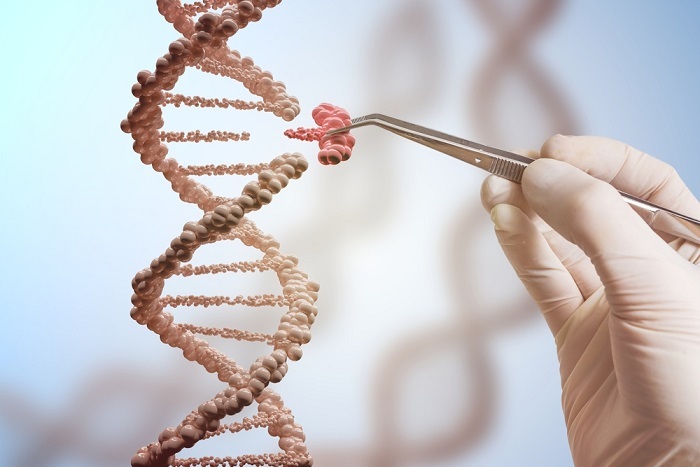
 Data Structure
Data Structure Networking
Networking RDBMS
RDBMS Operating System
Operating System Java
Java MS Excel
MS Excel iOS
iOS HTML
HTML CSS
CSS Android
Android Python
Python C Programming
C Programming C++
C++ C#
C# MongoDB
MongoDB MySQL
MySQL Javascript
Javascript PHP
PHP
- Selected Reading
- UPSC IAS Exams Notes
- Developer's Best Practices
- Questions and Answers
- Effective Resume Writing
- HR Interview Questions
- Computer Glossary
- Who is Who
What are Fosmids and How do they Work?
Introduction
Fosmids are vectors used for cloning large fragments of DNA. They were developed in the 1990s to improve on the capabilities of other cloning vectors, such as bacterial artificial chromosomes (BACs) and yeast artificial chromosomes (YACs). Fosmids are particularly useful for studying large and complex genomes, and they have become an important tool in modern genetics and genomics research.

Fosmids are derived from F-plasmids, which are small, circular pieces of DNA found in bacteria. F-plasmids are often used as vectors for cloning small DNA fragments, but their usefulness is limited when it comes to cloning larger fragments. Fosmids were developed to address this limitation by incorporating several key features that make them better suited for cloning larger fragments of DNA.
Features
One of the key features of fosmids is their larger size compared to other cloning vectors. Fosmids are typically around 40-50 kilobases (kb) in size, which allows them to accommodate larger DNA fragments.
This contrasts with BACs and YACs, which can be several hundred kb or even megabases in size. While larger vectors may be useful for cloning very large DNA fragments, they can also be more difficult to work with and may have lower stability.
Another important feature of fosmids is their ability to maintain stable and high-copy numbers in bacterial cells. This means that once a fosmid has been introduced into a bacterial host cell, it can replicate and produce many copies of itself.
This is important for several reasons. First, it allows researchers to amplify the DNA fragment of interest, making it easier to work with and analyze. Second, it ensures that the fosmid and the DNA fragment it contains will be stably maintained in the bacterial host cell, even after many generations of cell division.
Fosmids also contain several other useful features, such as selectable markers that allow researchers to identify and isolate cells that contain the fosmid. For example, a common selectable marker used in fosmids is the antibiotic resistance gene.
This gene confers resistance to a particular antibiotic, such as ampicillin, and cells that contain the fosmid will also contain this resistance gene. By growing the cells in the presence of the antibiotic, researchers can select for cells that contain the fosmid and the resistance gene.
To clone a DNA fragment into a fosmid, researchers first insert the fragment into a special type of plasmid called a fosmid vector. Fosmid vectors contain the necessary features for replication and maintenance of the fosmid in bacterial cells, as well as unique restriction sites that allow for the insertion of DNA fragments.
The DNA fragment is typically prepared by cutting it with a restriction enzyme, which creates sticky ends that can be easily ligated into the fosmid vector.
Once the DNA fragment has been inserted into the fosmid vector, the resulting construct can be introduced into bacterial host cells using a process called transformation. The host cells take up the fosmid construct and begin replicating it, producing many copies of the fosmid and the DNA fragment it contains.
The transformed cells can then be grown on selective media containing the appropriate antibiotic or other selectable marker, which allows researchers to isolate cells that contain the fosmid and the DNA fragment of interest.
Once the fosmid has been isolated and amplified, researchers can perform a variety of experiments to study the DNA fragment it contains. For example, they may sequence the DNA fragment to determine its nucleotide sequence, or they may use it to create transgenic organisms that express the gene encoded by the DNA fragment.
Fosmids can also be used to construct large genomic libraries, which are collections of clones that together represent the entire genome of an organism.
Conclusion
Fosmids are powerful tools for cloning large fragments of DNA and have become an important tool in modern genetics and genomics research. Fosmids are derived from F-plasmids but are larger in size and can maintain stable and high-copy numbers in bacterial cells. They also contain selectable markers that allow for the isolation of cells that contain the fosmid and the DNA fragment of interest. Once the fosmid has been isolated and amplified, researchers can perform a variety of experiments to study the DNA fragment it contains, including sequencing and creating transgenic organisms.
Fosmids are an essential tool for studying complex genomes and are an important contribution to the field of molecular biology.
FAQs
Q1. What is a fosmid?
Ans. A fosmid is a cloning vector used for cloning large fragments of DNA. It is derived from F-plasmids and contains several key features that make it better suited for cloning larger fragments of DNA.
Q2. What are the advantages of using fosmids for cloning?
Ans. Fosmids are larger in size compared to other cloning vectors, which allows them to accommodate larger DNA fragments. They also maintain stable and high-copy numbers in bacterial cells, contain selectable markers, and can be easily amplified.
Q3. How do researchers clone a DNA fragment into a fosmid?
Ans. Researchers insert the DNA fragment into a fosmid vector, which contains the necessary features for replication and maintenance of the fosmid in bacterial cells, as well as unique restriction sites that allow for the insertion of DNA fragments. The resulting construct is then introduced into bacterial host cells using transformation.

